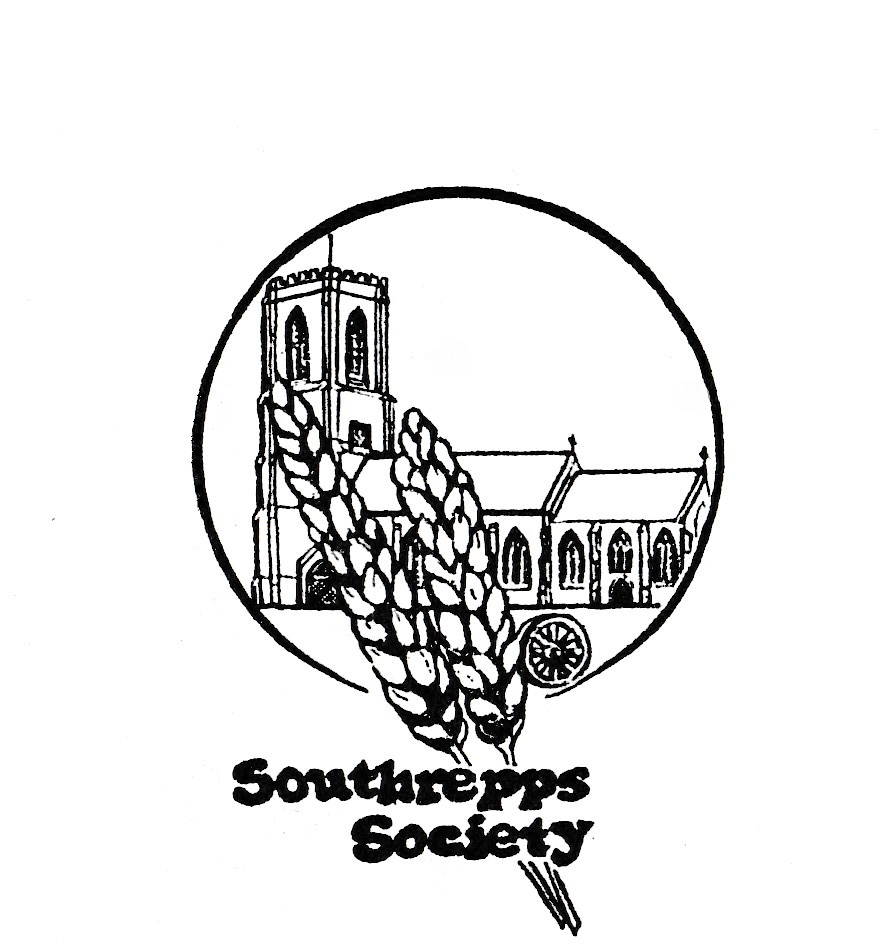Author Colin Needham
The Dutchman’s Farm
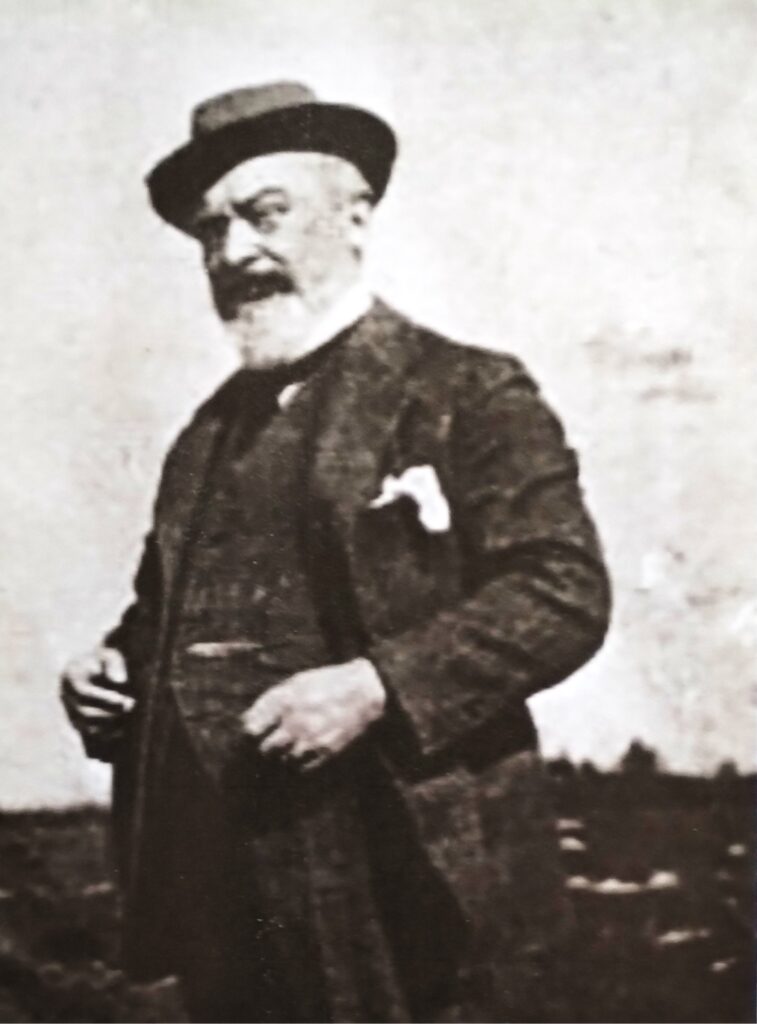
A Little Bit Of History
In the 19th century most of the farmers in Southrepps were tenants of landed estates. The predominant landowner was the Gunton Estate (Suffield) but land in the parish was also owned by the Gurneys, the Hoare family and the Buxtons. Private landlords with substantial acreage over time included Elizabeth Pardon, James Gay and the Church of England.
In the early decades of the 20th century, before and after the first world war, farming generally was in decline with increasingly poor returns for the owners of the land and the tenant farmers. In Southrepps as elsewhere, agricultural wages were low, farm workers’ living conditions were poor with much unrest leading to discontent and notably in Norfolk, strikes and lockouts.

The first meeting of the Agricultural Workers Union took place in The Angel Public House in North Walsham in 1906 and by 1910 their generally unsuccessful requests for better pay led to lock outs of farm workers who were members of the Union and organised strikes. Farm wages rose during WW1 as prices improved and workers became a scarce commodity, only to collapse in 1921 to below pre-war rates. Much of the activity around the farm workers’ Great Strike of 1921 was focused in this area (Southrepps, Trunch, Knapton, North Walsham and Aylsham) and involved increasingly politically motivated disputes between the farmers and their men.
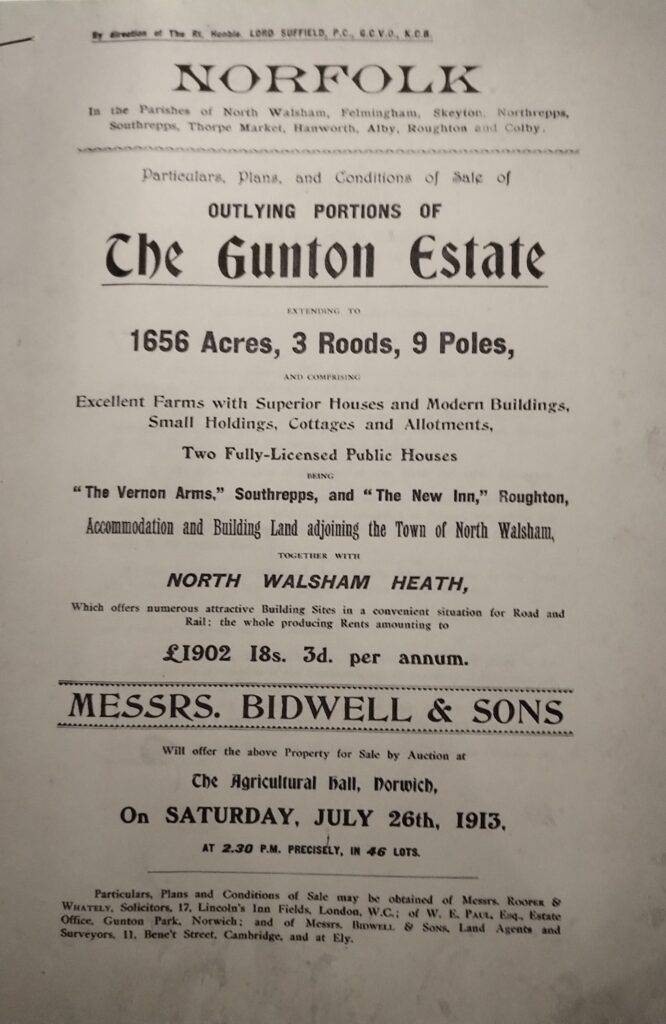
Against this background the landowners were either financially obliged or chose to sell their tenanted farms . In Southrepps all of the farms owned by the Gunton Estate were sold at Auctions in 1913 and 1921. Most of the Southrepps farms were purchased by the existing tenants.
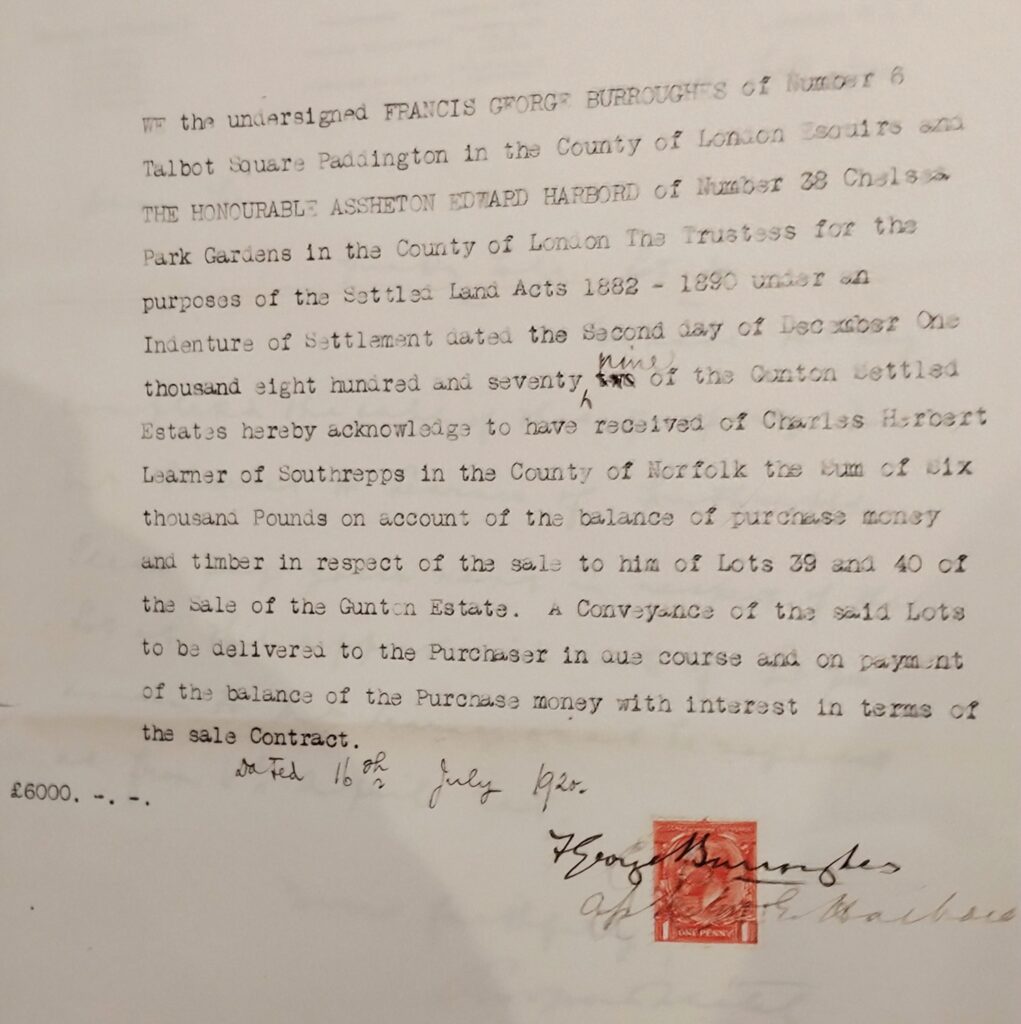
The Importance of Sugar Beet
In Europe during the 19th Century, beet sugar had been produced successfully for many years. In Great Britain much of the wealth of the the Empire was founded on the production of cane sugar which was a protected trade producing considerable tax revenue for the government. Sugar Beet was grown in relatively small quantities on land with easy access to the coast and the crop was exported to Dutch and Belgian processors.
The first attempts to establish a home grown beet sugar industry were made in the 1880s. All of these early enterprises failed. The first ultimately to be successful sugar beet factory was built in Cantley in 1912 by Johannes Petrus van Rossum. His Dutch family had long been associated with the sugar trade as owners of numerous sugar refineries in Holland and sugar cane refineries in Java and elsewhere.
The factory was built next to the navigable river Yare and the railway. Most of the components were from a dismantled redundant factory in Holland. Many of the workers and the supervisors building the factory were brought over from Holland.
The factory was built and commissioned in a remarkably short time.
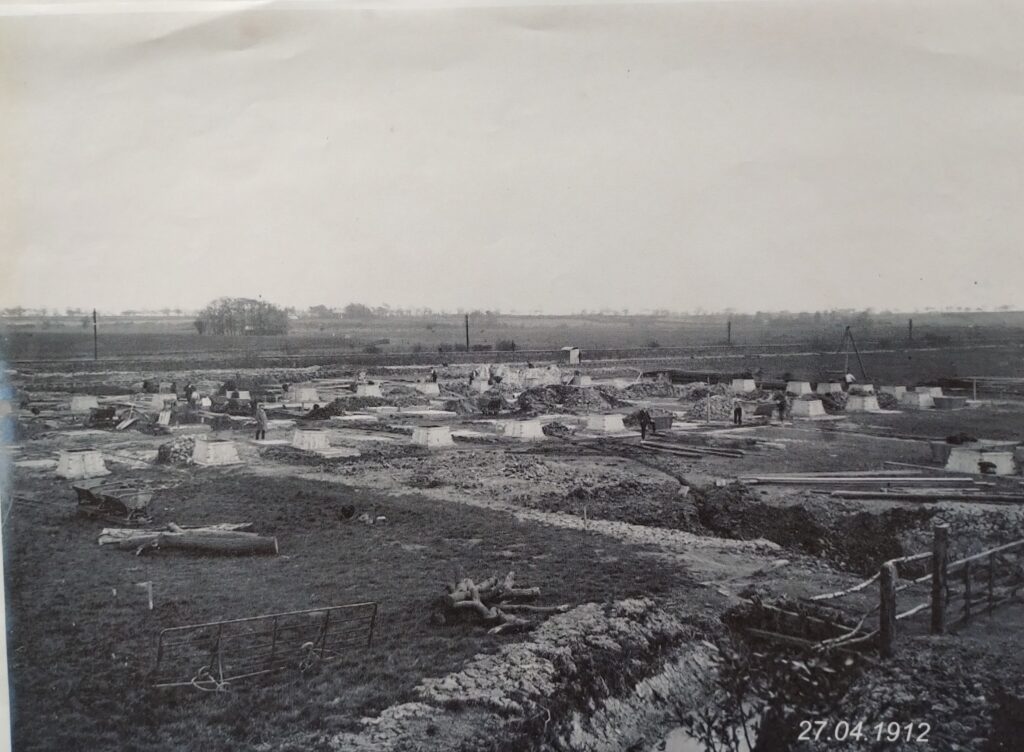
Eight months later the factory was working.
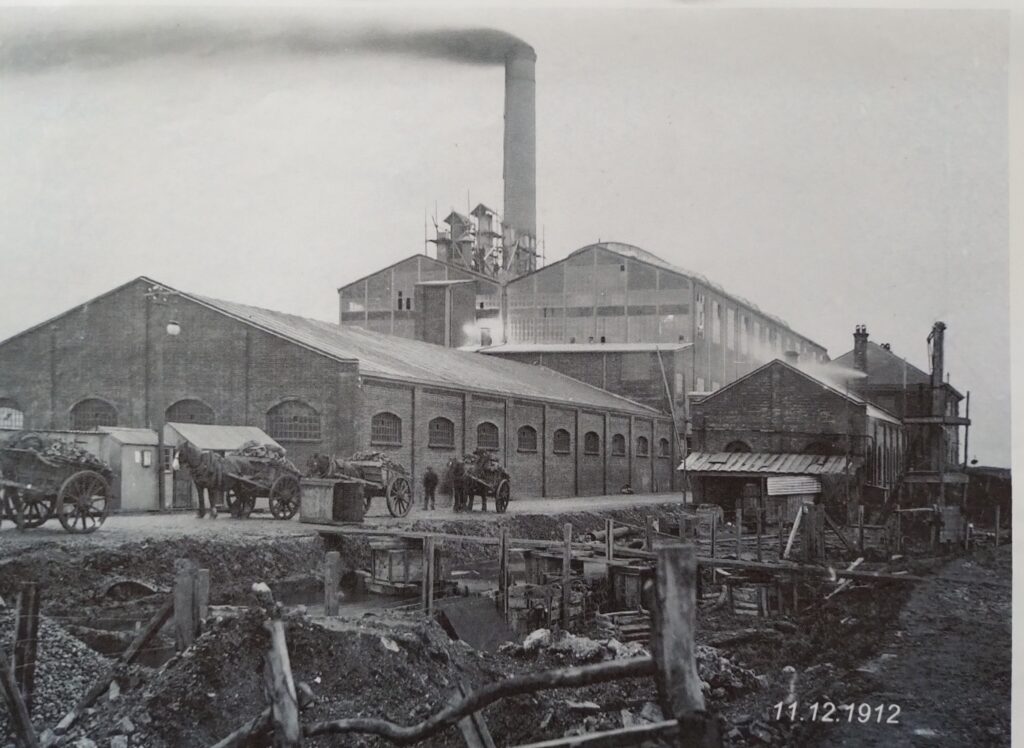
Despite some early setbacks, not least the onset of WW1 and the reluctance of Norfolk farmers to grow this new fangled crop, the factory was successful. Van Rossum and his Dutch colleagues established themselves in Cantley. To maintain supplies for his factory he bought farms nearby at Strumpshaw, Beighton, Buckenham, Limpenhoe and Reedham. Initially much of the growing and processing was carried out by seasonal workers brought over from Holland.
By 1922 Van Rossum had demonstrated the feasibility of home grown sugar production. The new industry had the potential to provide much needed full time employment for farm workers and a regular income for farmers. Politicians realised that support would be required to allow the home grown industry to compete with imports from the Dominions. Initially this was achieved by tinkering with excise duty payable on sugar imports. Despite these incentives, the uptake by farmers was hesitant. Rural unemployment continued to grow and by 1924 the government’s response to the crisis was the British Sugar (Subsidy) Act of 1925 which rewarded growers and processors in a transformative way.
In short order a further 17 factories were built by private enterprise and East Anglian farmers were queuing to get their sugar beet quota from their local factory. Farmers appreciated the assurance of predictable payments for their crop and with time appreciated the benefits of using sugar beet as a break crop improving the soil quality for following plantings. Van Rossum separated his farming business from the processing side and established privately The East Anglian Real Property Company.
In 1930 an Act of Parliament reorganised the factories and set up The British Sugar Corporation with the government as a shareholder.
From his home base in Cantley, van Rossum continued to buy up farms across the County: farms in Guestwick, Hoe lodge, Sporle, Cranworth and a 645 acre farm at Paston.
EARPC in Southrepps
The 1920s
By the 1930s most of the farms in and around Southrepps were avid growers of sugar beet, which for much of the time before and after WW2 was their most important crop. The soil was well suited to the crop and the railway provided easy access to the Cantley factory. One such farm was owned by Charles Learner. He was a farmer of some substance in Erpingham before he took on the tenancy of Hill House farm in 1911. His key workers moved with him from Erpingham and they lived in the cottages alongside the farm in Pit Street. In 1920 Learner became the owner of the farm when he bought Hill House and the adjoining Manor Farm from the Gunton Estate.
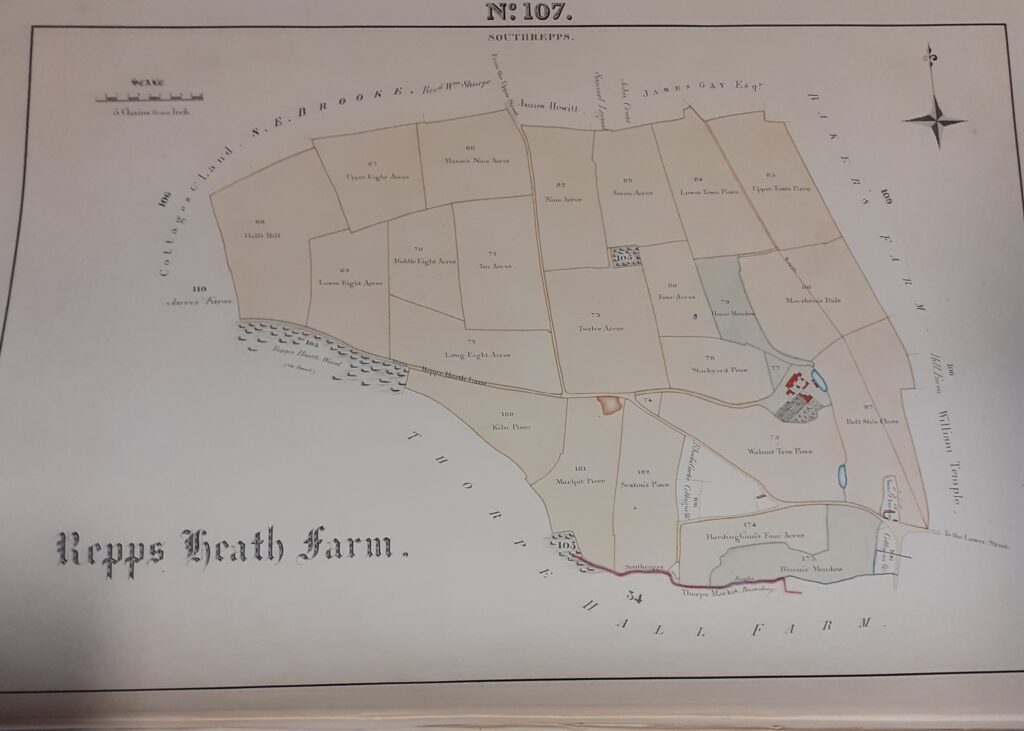
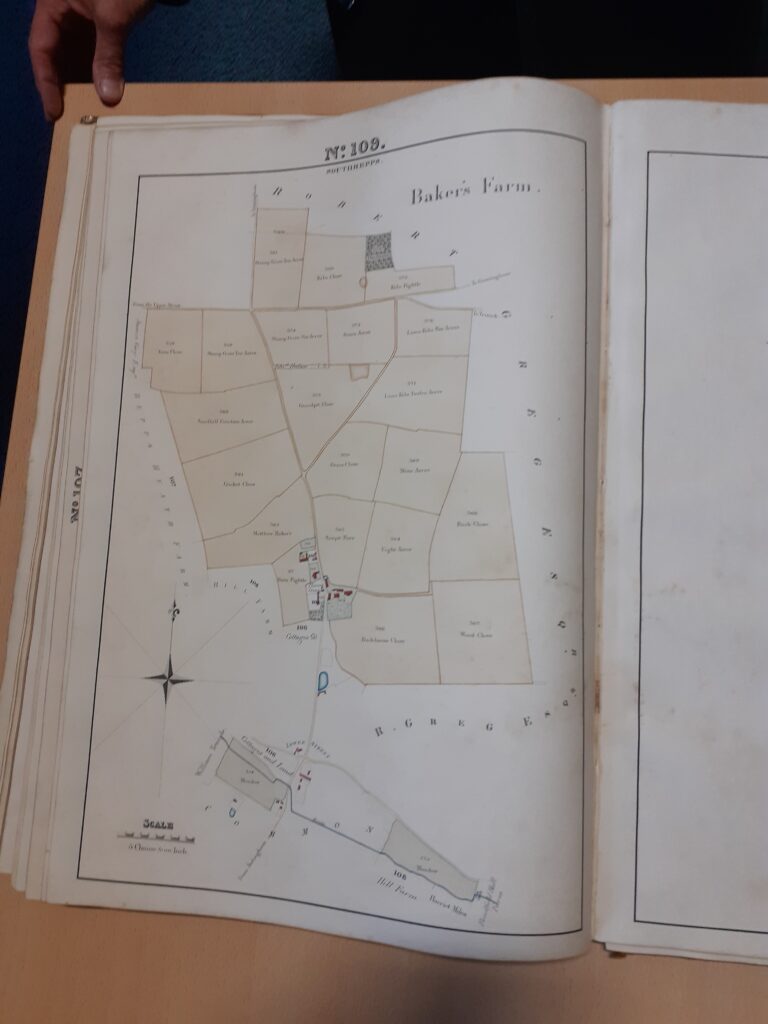
At that time the adjoining 170 acre Lime Kiln Farm was part of the Buxton Estate. Earnest Owles was the tenant, he also farmed Gimingham Hall Farm. In 1922 he became the owner when he bought the farm from the Buxton Estate .
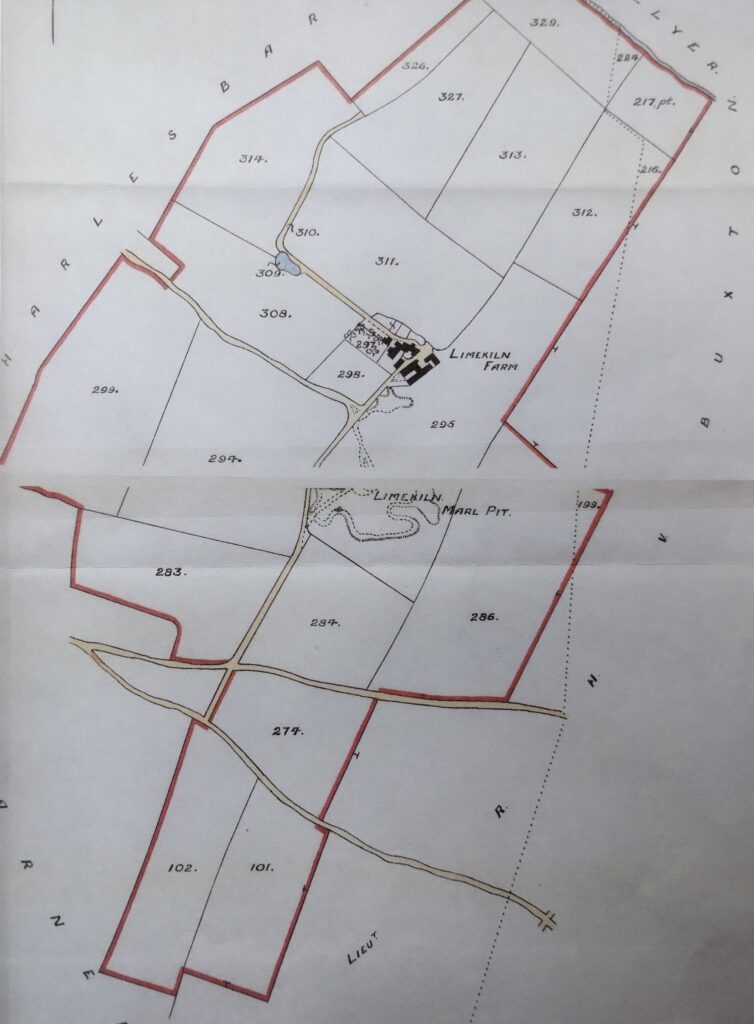
Earnest Owles died in 1925 and Charles Learner bought the farm and added it to the Hill House Estate. Hill House was to become the Home Farm. The farmhouse at Manor Farm was let to private tenants and the cottages at Lime Kiln were occupied by Learner’s workers.
The 1921 Census returns records at least 18 workers on Learner’s farms.
The 1930s
Charles Learner retired from farming in 1937 and the entire 531 acre estate was put up for Auction.
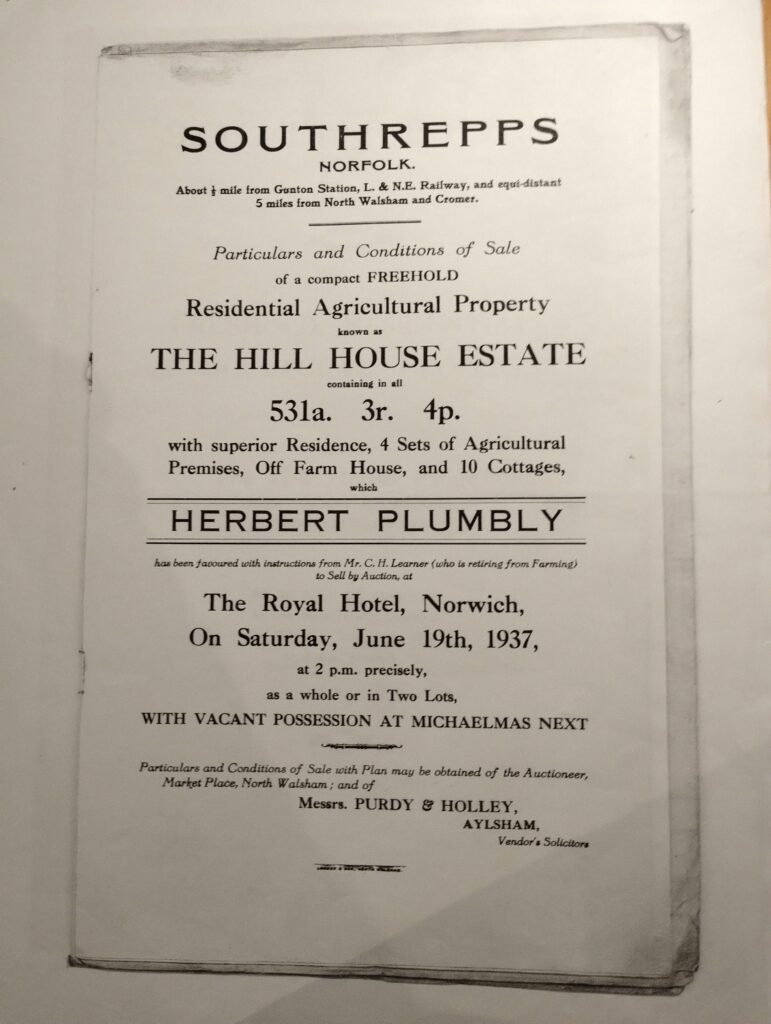
The estate including the land, buildings and cottages was bought by EARPC. The farm manager took up residence at Manor Farm and the farmhouse on Pit Street was let to a private tenant, Mr Argent. Charles Learner’s farm workers went with the farm.

EARPC had bought the much larger Hall Farm at Paston just a few years earlier and the Southrepps farm and the Paston farm were managed as a single unit .
EARPC had been set up by van Rossum in 1920s as a model farm estate to produce sugar beet for the Cantley factory. Other crops in the rotation were incidental to that primary objective. Each farm was run by farm manager and for this purpose a few Dutch farmers from the Western Brabant immigrated to England. Their strictly intensive arable farming methods were Dutch based. Large fields were created by the removal of hedges and woodland and soil fertility was dependent upon the application of chemical and artificial manures. Initially two or or exceptionally three crops of sugar beet were planted in succession requiring large numbers of seasonal workers for singling, hoeing and harvesting the crop. In the beginning many of these seasonal workers came from Holland. The considerable acreage of summer grazing marsh acquired with the farms around Cantley were largely underutilized, not stocked and poorly maintained.
By 1938 it was becoming apparent that crop yields of beet and the following crops were being reduced by degradation of the soil, particularly on higher land. The farming establishment was changed. All the farms were put under the general management of Adriaan den Engelse, an experienced former farm steward and his assistant Mr Eshuis. Eshuis was an agronomist and he was tasked with undertaking a science-based review of farming practices and to recommend measures to raise the agricultural value of the land. From that time the Dutch managers were replaced by local Stewards at each farm. Billy Ecclestone was Steward at Southrepps for many years. They were responsible for the the day to day running of the farms. All of the administrative, commercial and agrarian decisions were taken by Adriaan den Engelse and his team in Cantley. They reported to van Rossum.
As a result of the review by Eshuis and the analysis of field trials based on his recommendations, the farming methods used across the estate were transitioned from arable farming to mixed farming. The marshes were improved and cattle introduced on a large scale, better agricultural implements were procured and 10 large multi purpose barns were built . This included the large barn at Paston. A poultry farm and piggery was established at Cantley.
The 1940s
In 1939, as a result of the war the estate reverted from peacetime to war time conditions. Johannes Petrus van Rossum died in 1943. The company was Dutch with van Rossum’s heirs still the owners, living in occupied Holland. A London based legal entity was set up to allow the Company to continue to function under the trusteeship of Sir Alfred Wood, a leading personage in the beet sugar industry and long time associate of van Rossum. Wood was one time Chairman of British Sugar. The estate was highly profitable during the war compared with its performance in the proceeding years and consequently much of the profit was taken by the government as Excess Profit Tax. Any residual funds were held in London pending the outcome of the war.
In Southrepps as elsewhere, agricultural labourers of military age were called up . Casual labour was directed for war work on airfields and other military work as were women over a certain age. Machinery purchase was controlled by permit and the erection of new buildings was prohibited. It was not until 1943 when prisoners of war were allocated for farm work that the acute shortage of workers on the farm was eased.
Uniquely because of the nationality of the senior management, the estate was deprived of expertise. Den Engelse and Eshuis were initially classed as “aliens” and were subject to investigation and both were briefly interred from 24th May until 26th July 1940. Unfounded suspicions were aroused by reports (fake news) that the large open fields and large barns which characterised the farms near the coast were associated with a German airborne invasion plan.

After the war the estate was regarded as an exemplar of modern large farming practice. The Southrepps farm was considered to be particularly successful. In 1947, the estate was visited by Ralph Whitlock, an author and broadcaster. Norfolk Ploughland is a transcript of an article or possibly broadcast based on his visit. It was was donated to the Southrepps Society by the late David Patterson who lived in Long Lane and was one of the last managers of the Southrepps, Paston and Guestwick farms. The transcript gives an excellent description of EARPC farming methods at that time.
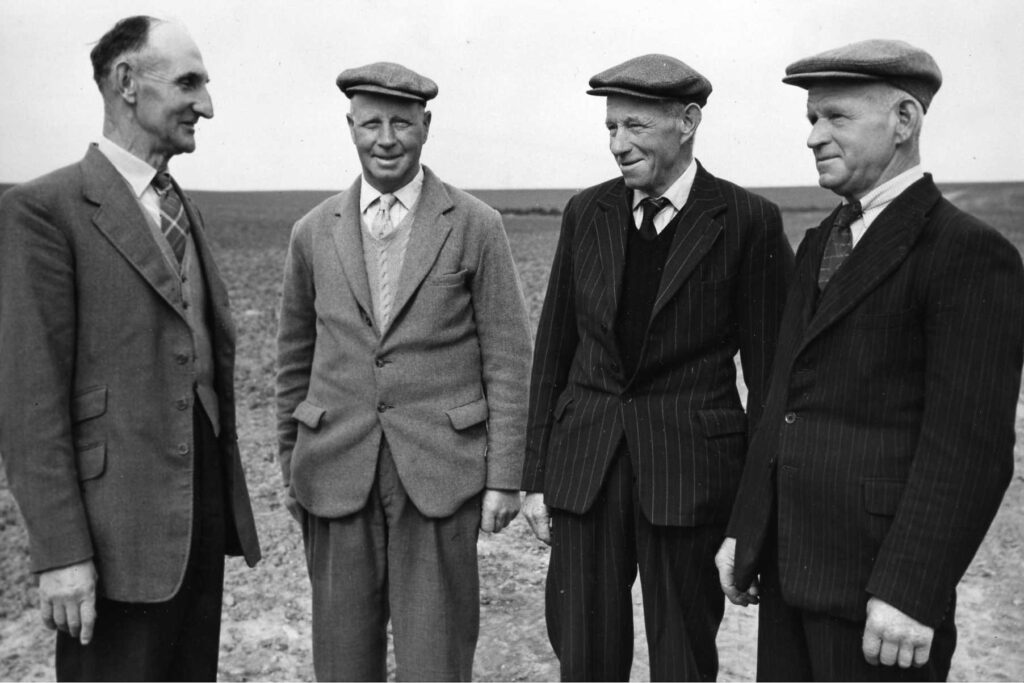
The 1960s and 70s
Adriaan den Engelse had a son Robert who studied Natural Sciences at Cambridge and took a two-year Diploma in Agriculture . He took on the management of the Paston and Southrepps farms in 1961. He lived at Manor Farm. When his father retired in 1969 he took over as General Manager of EARPC and remained in this role until leaving the company in 1978.

In 1967, 187 acres of the Paston Farm were sold for the construction of the Bacton Gas Site.
Acquisitions continued. Church Farm in Southrepps had been farmed by the Bartram family for many years. After generations of the family as tenants, James William Bartram bought the 64 acre farm from the Buxton Estate in 1919. Other Glebe land was purchased from the The Governors of the Bounty of Queen Anne in 1921 and more land from Albert Gibbons in 1926. The Bartram farmers died out without heirs. Nancy Bartram was the last family beneficiary and she died in 1975. Her Executors sold the 85 acre farm to EARPC in 1975.
In 1976 the farmhouse, the farmyard buildings and yard were sold by EARPC to Roger Codling. The buildings were renovated and new housing built on what is now Meadow Lane.
Church Farm had been neglected and comprised 14 small fields entirely unsuited to contemporary methods of farming. In accordance with their farming methodology, EARPC removed all of the field boundaries creating two large fields.
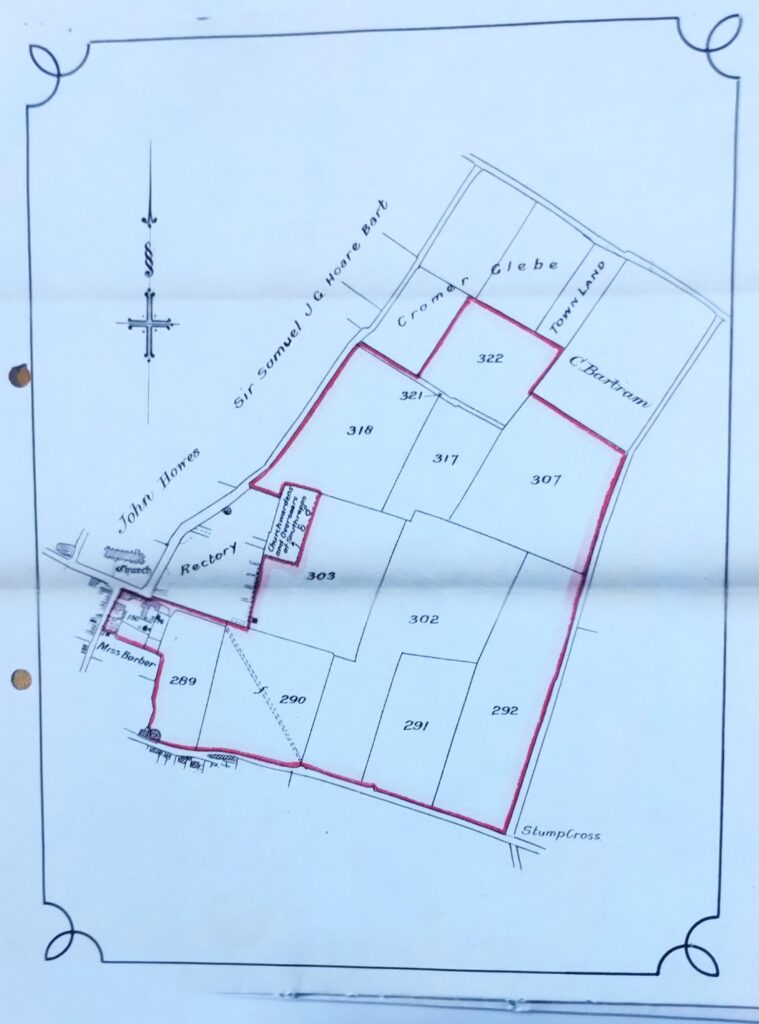
In 1920 Samuel John Gurney Hoare sold 44 acres of land to the west of the village to Arthur Hewitt of Gables Farm. In 1965 Stephen Pike, the last farmer of Gables Farm, died and in 1973 his Executors sold 47 acres of the farmland to EARPC.
In 1976 the company celebrated the 50th anniversary of its founding in 1926. The principal event was a grand dinner with entertainment in the Great Thatched Barn at Paston. The agricultural barn which had been well used and maintained by EARC was cleaned from top to bottom, walls floor and roof by workers from the Paston and Southrepps farms.
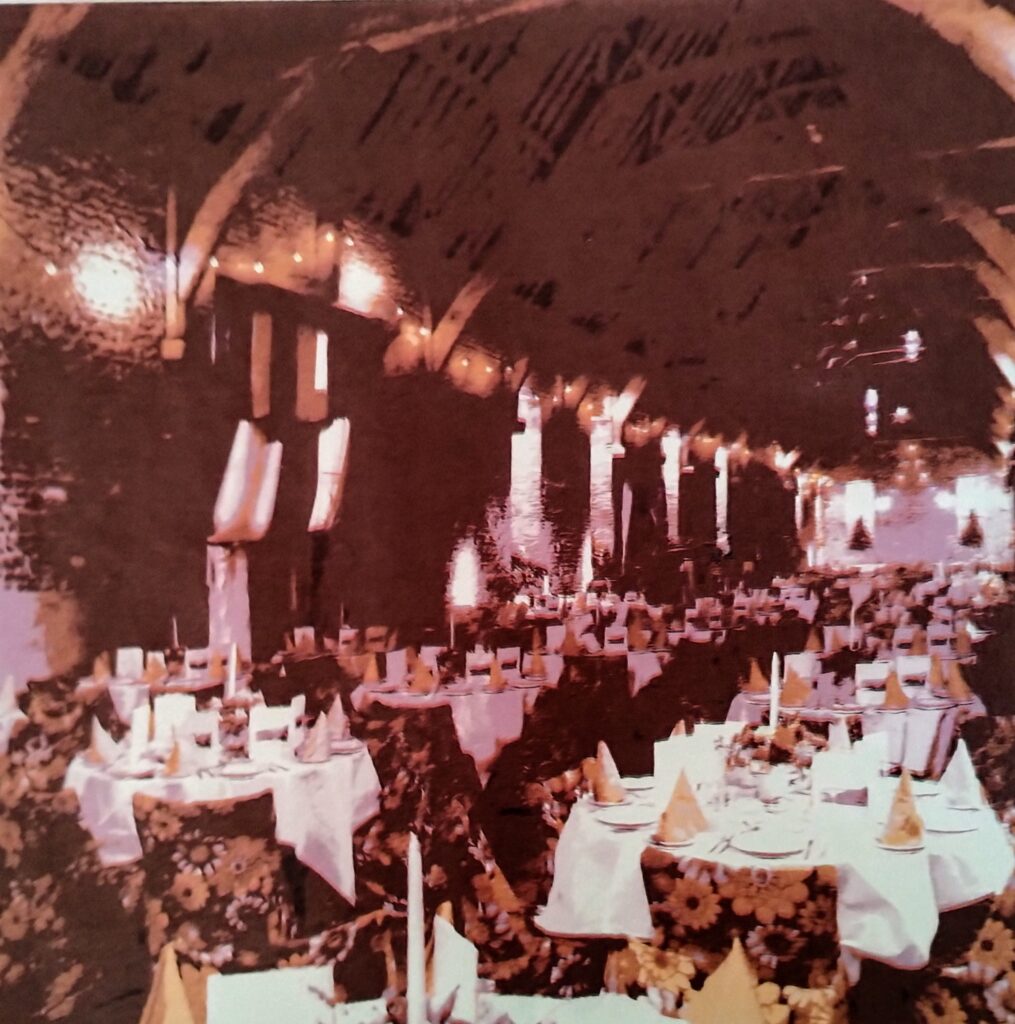
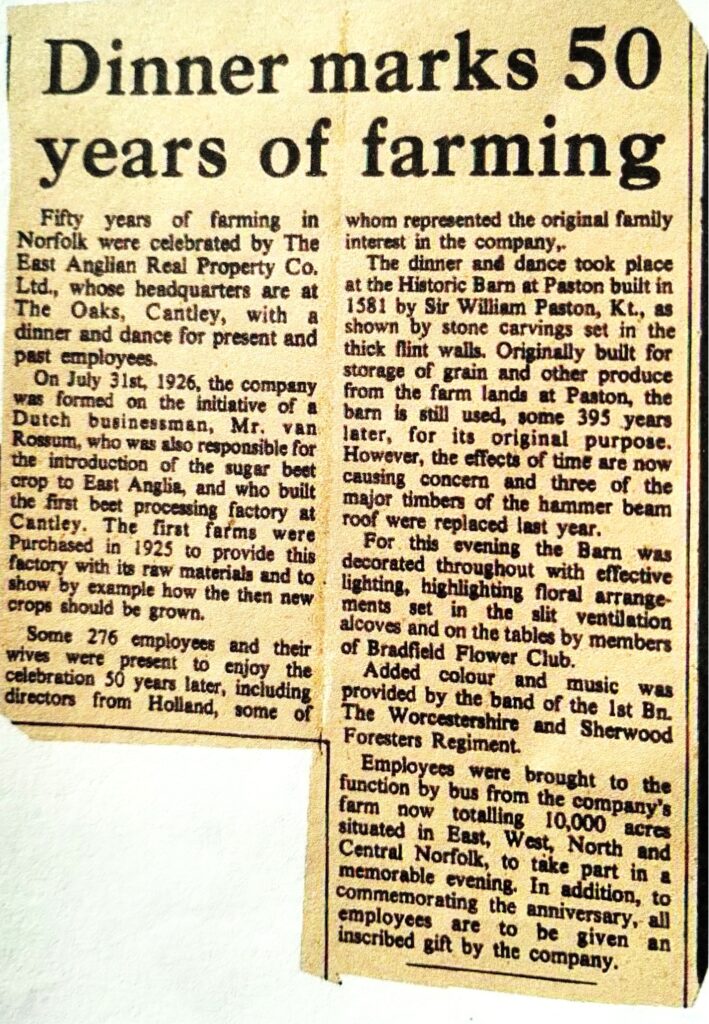
Some 276 employees and guests including Directors and including members of the founding family attended .
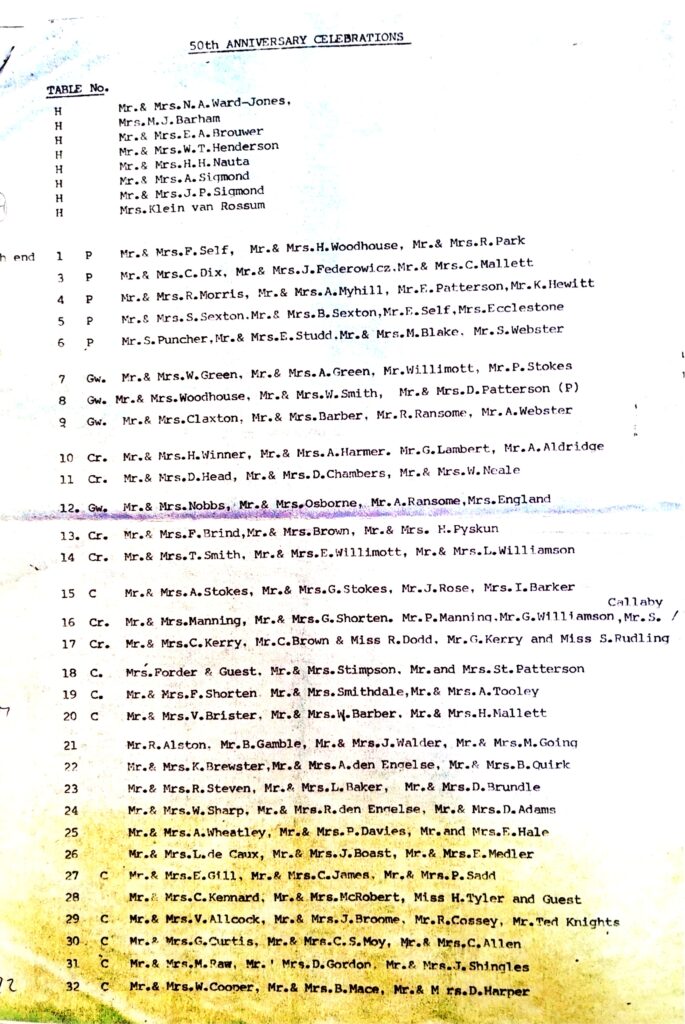
At that time, the head office of the Company was in London and Mr. Ward-Jones the Chairman, who attended the Dinner, wrote a personal letter of thanks to Joe Mallett and David Patterson congratulating them and their teams for making the event a great success.
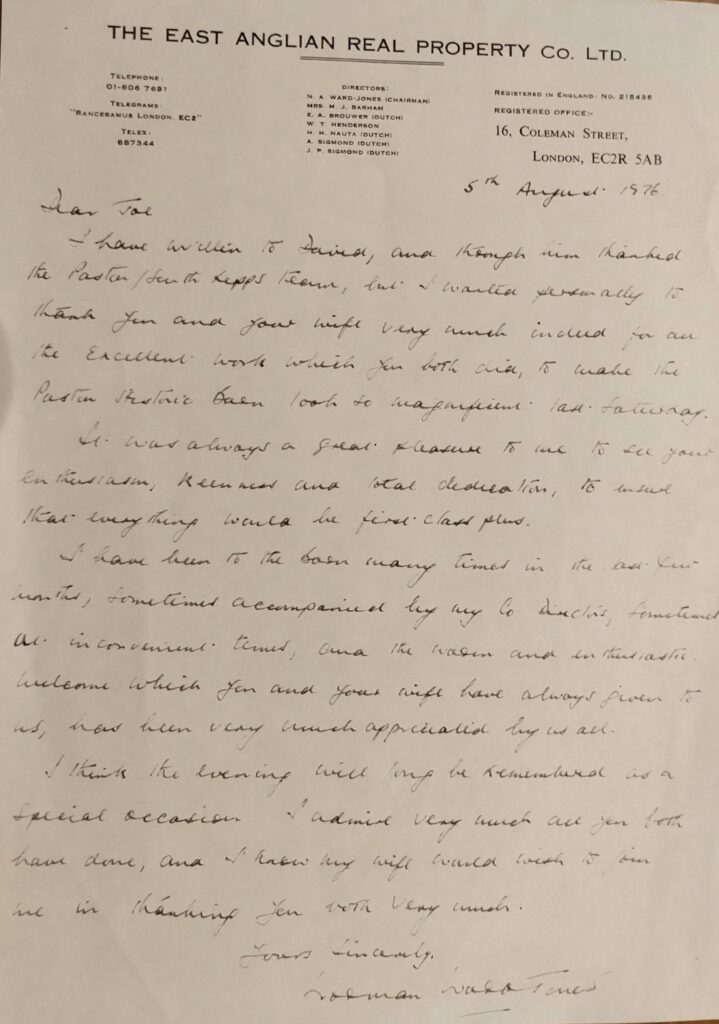
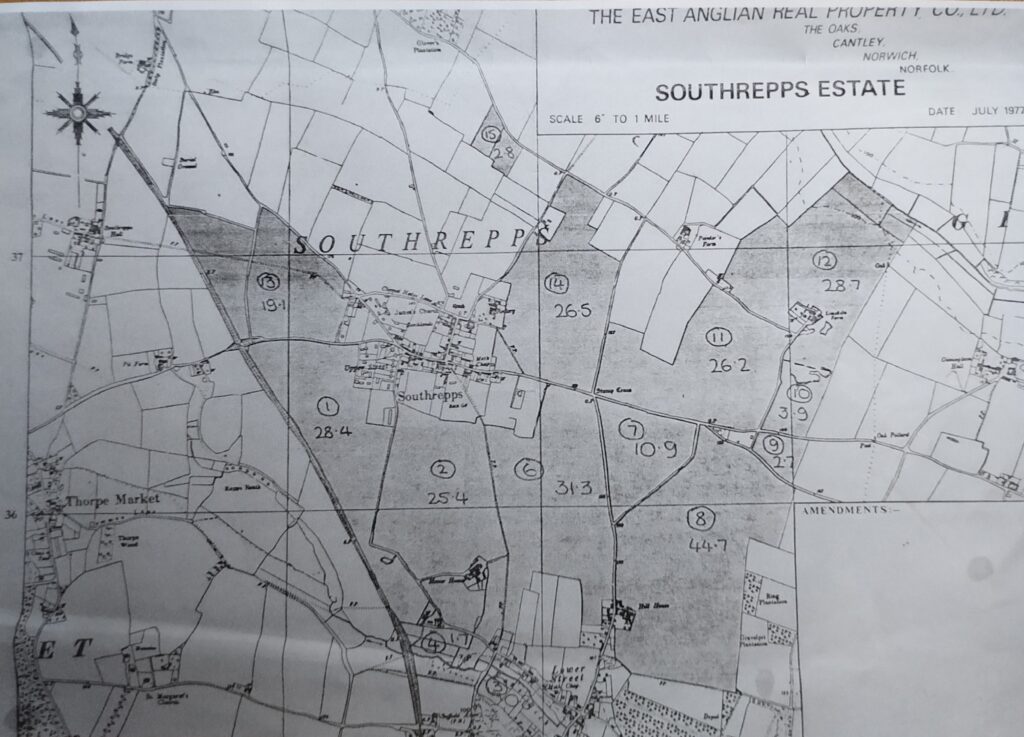
THE 1980s
By 1980 political and commercial changes were underway affecting the future the home grown sugar industry. Proposals to privatise the British Sugar Corporation were about to be implemented . The EU required the British Government to reduce and concentrate home grown sugar production .This was to be achieved by closing the processing factories.
The owners of EARPC noted this instability and either by coincidence or design they sought ways to liquidate their assets in Norfolk.
In September 1980 the ownership of EARPC was transferred to the Mineworkers Superannuation Fund of the Coal Industries (C.I.N.I.I.) The Dutch connection was ended. The estate then consisted of 12,000 acres of managed farmland including 1500 acres of permanent grazing marshland.
The local organisation under the new management was retained. Land acquisition continued .
The Gables Farm land acquired in 1973 adjoined what are now known as Drury’s Barns. The site for the erection of these barns had been purchased from Arthur Hewitt in 1932 by Fred Drury, a haulage contractor.
In 1987 EARPC purchased the freehold of the site including the Drury’s Barns.
This was a strategic acquisition as there were no substantial barns on the Southrepps Farm for the drying and storage of grain.
By 1986 the C.I.N.I.I. may have contemplated the sale of the entire estate. A report prepared at the time provided some statistics regarding the scale of the enterprise.
There were 63 tractors on the farms, 12 modern combines, 3 mechanised sugar beet harvesters and 4 self propelled sprayers, numerous loaders and forklifts, lorries, vans and cars. There were approximately 1000 milking and replacement cows, a herd of 500 beef cattle, 3500 sheep and lambs and 17000 broiler breeding hens in 3 flocks. The turnover from the arable and livestock enterprises was approximately £3,000,000.
The 660 acre Southrepps farm was managed by David Patterson. He also managed the residual land at Paston and the much larger Guestwick farm .
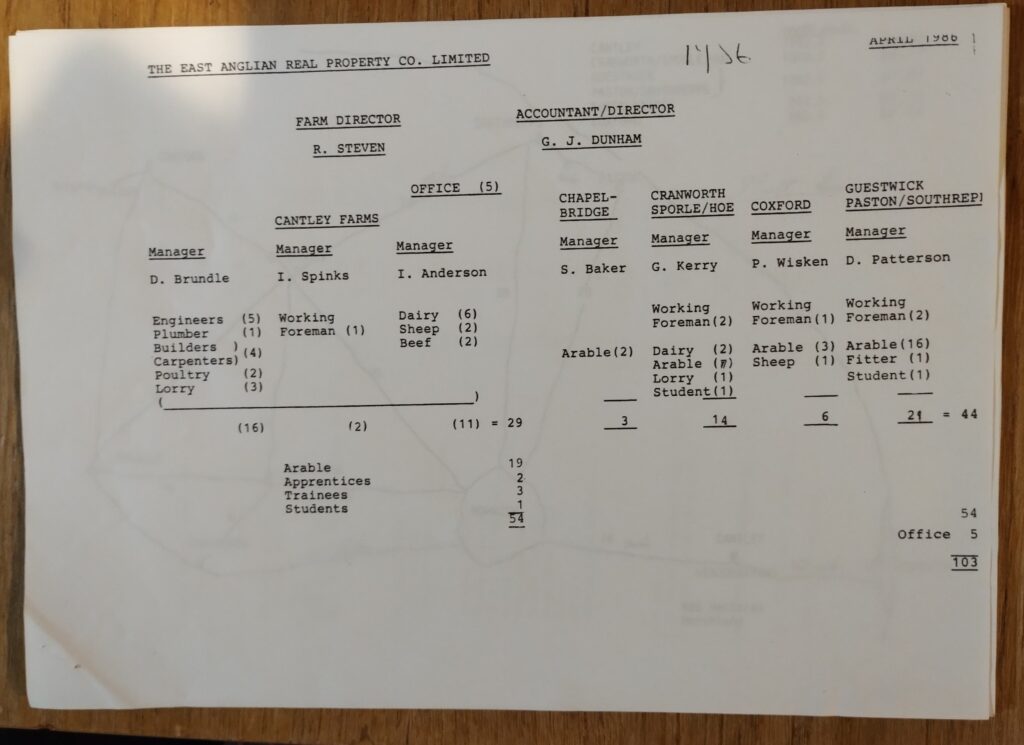
In 1988 the estate was sold off in farm lots. The Southrepps Farm was purchased by Peter Sladden (Wayware Ltd) based at Hall Farm. The EARPC land was added to the former Tyler Brothers land in Southrepps and Green Farm land in Thorpe Market together with Frogshall Farm in Northrepps , Lodge Farm Southrepps.
Sugar beet growing continues to be an important crop on these farms.
